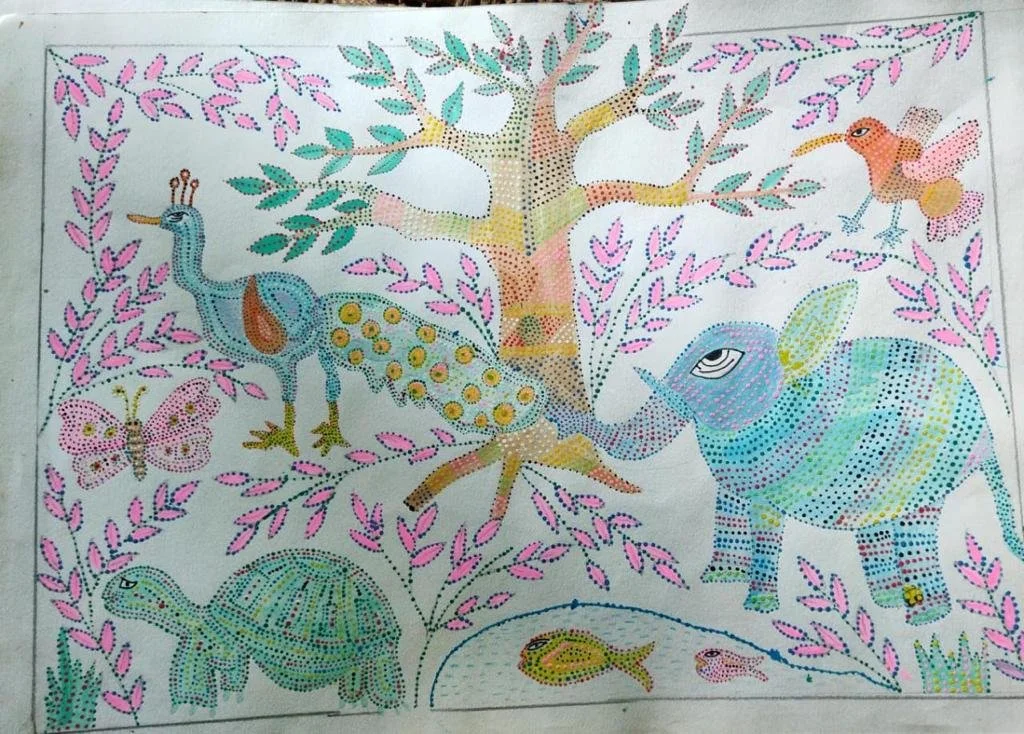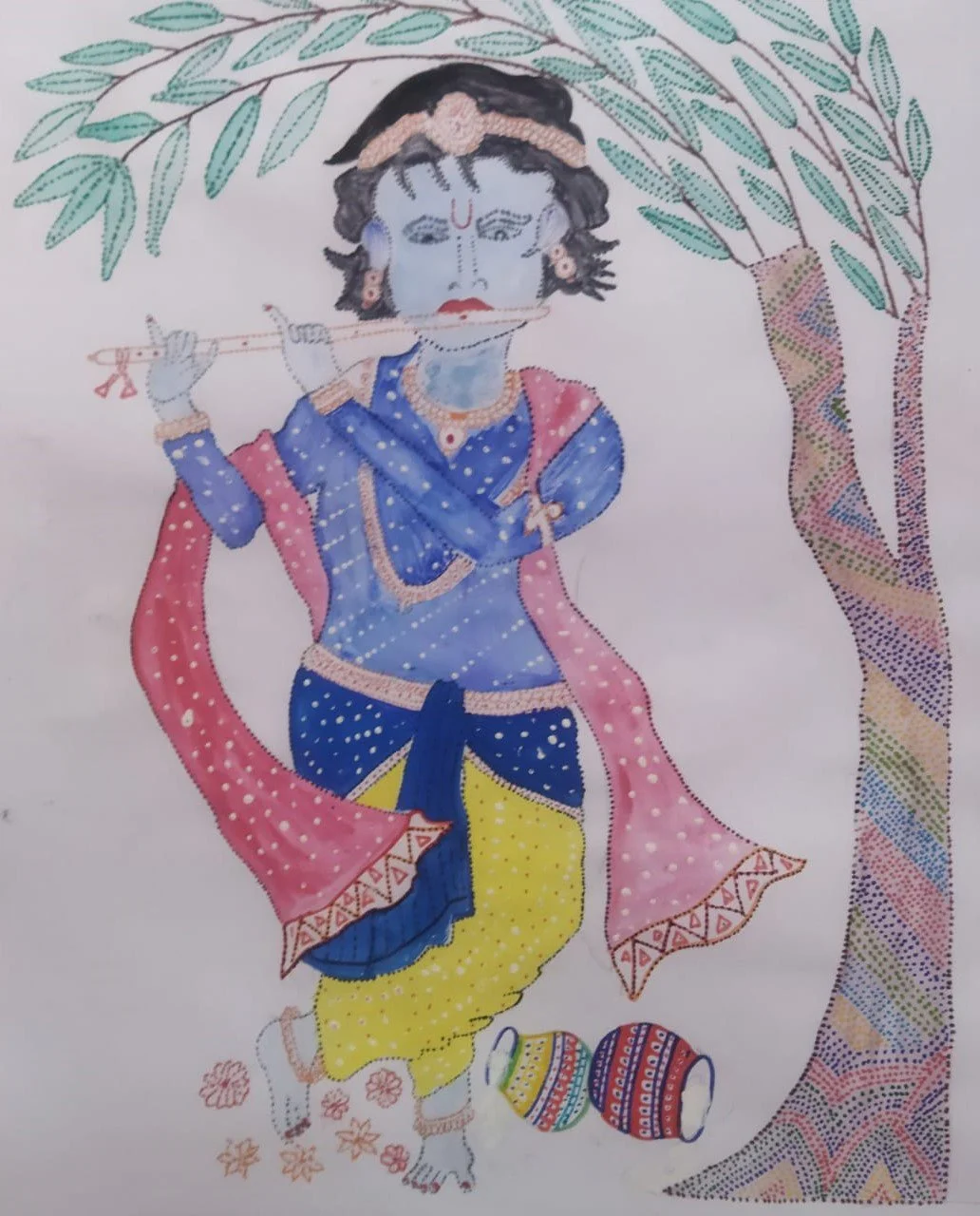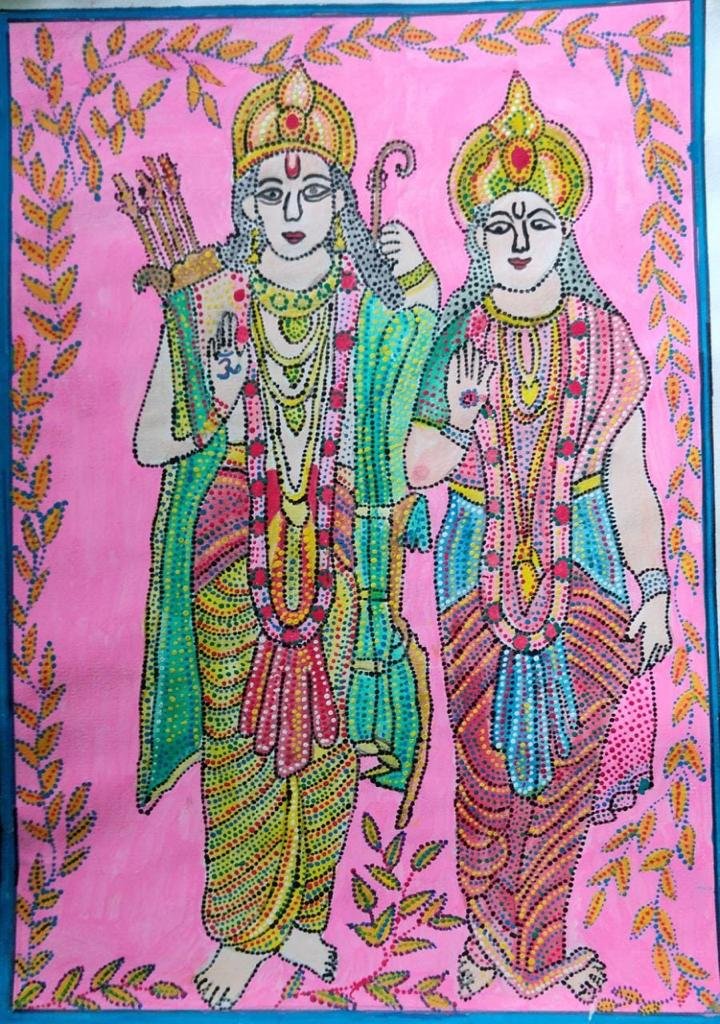
Empowering Village Girls through Art
As I reflect on my experiences working with rural communities, I am reminded of the transformative power of art. During my time as a CM Fellow, I had the privilege of teaching Bhil tribal painting to a group of 5 girls from the village of Baratekdar.
To illustrate the techniques and inspire the children, I created my own Bhil, Warli, and Madhubani paintings on various themes, such as turtle conservation, lake ecosystem restoration, and the importance of early antenatal care registration. What struck me was how quickly the girls picked up the technique, which involves creating intricate patterns with colorful dots. Bhil tribal art is deeply rooted in nature, and I encouraged the girls to explore themes related to the environment and religion.
This initiative was not just about teaching art; it was about fostering creative thinking and empowering these young girls to express themselves. By connecting art with education, I aimed to promote a deeper understanding of complex themes and contribute to the United Nations' Sustainable Development Goals (SDGs), specifically Quality Education (SDG 4). Additionally, this initiative aligns with the National Education Policy 2020's objective of promoting creative thinking and experiential learning.
I was thrilled to see the girls' wonderful Bhil paintings, which not only showcased their artistic talent but also demonstrated their understanding of complex themes.
Taking this initiative a step further, I proposed to the education department that the paintings could be sold to generate income for the village children. I believe this could incentivize parents to send their children to school, rather than engaging them in child labor.
I am reminded of the impact that design can have on communities. My experiences have taught me that design is not just about aesthetics but about empowering individuals, fostering creative thinking, and driving positive change.



